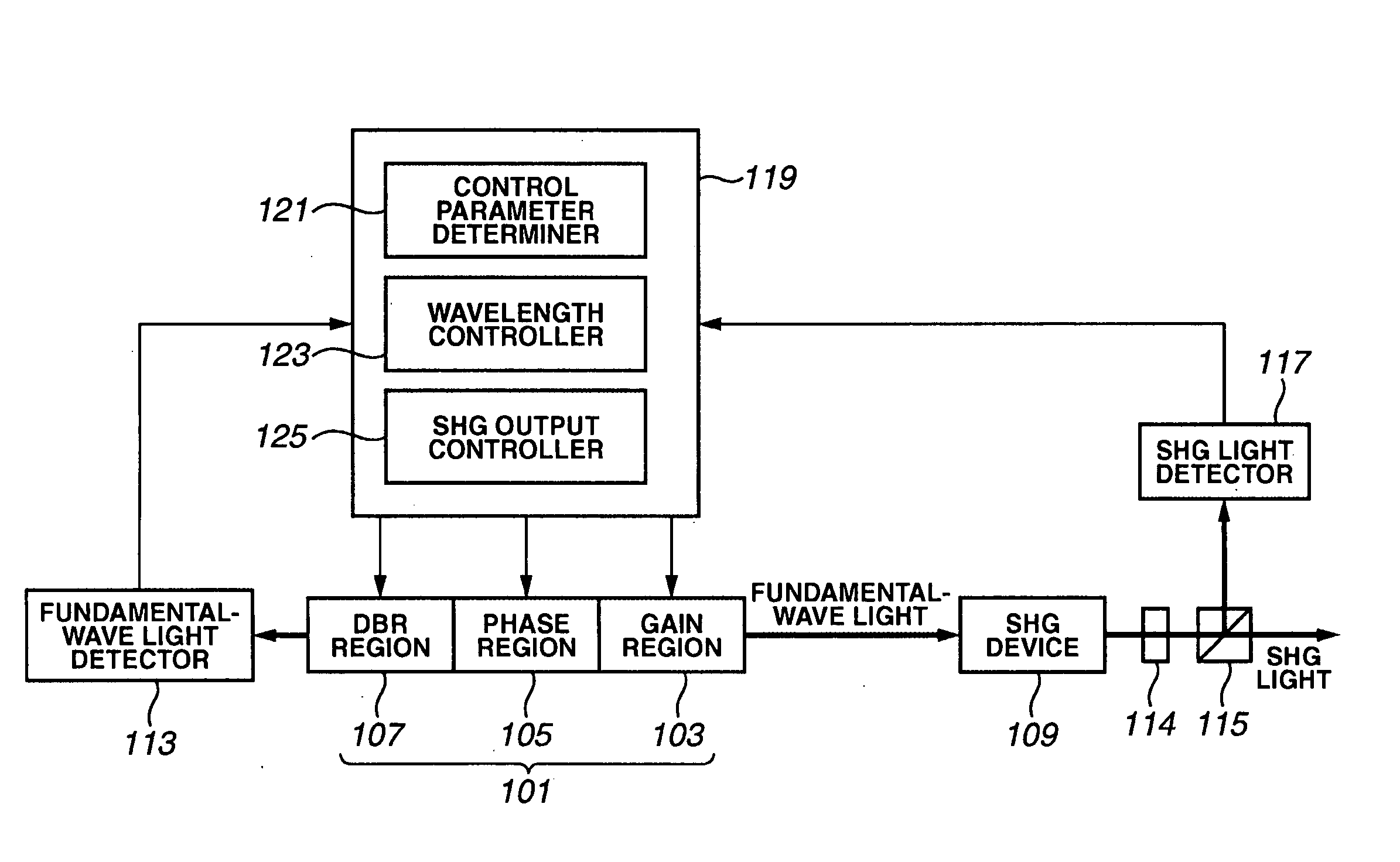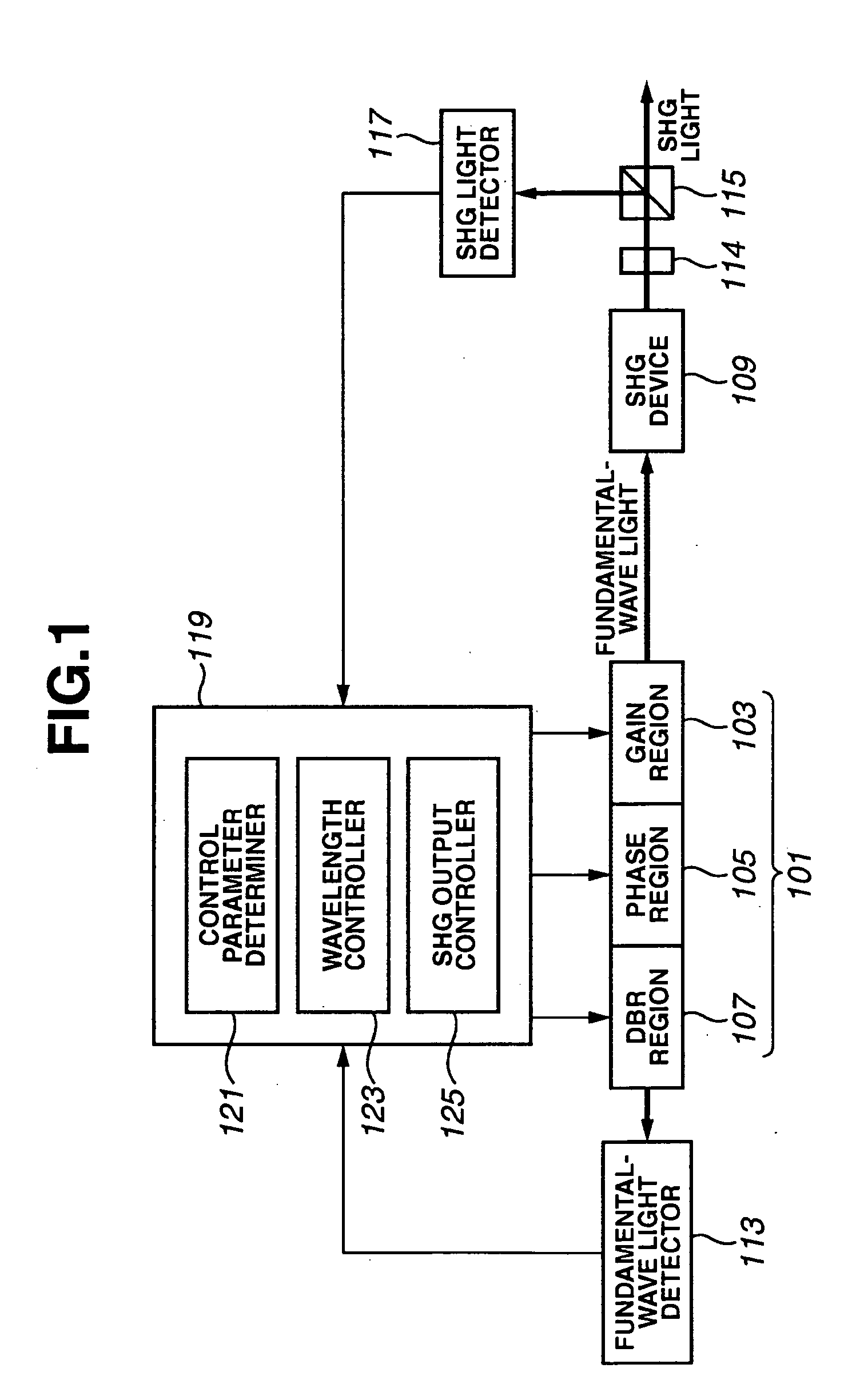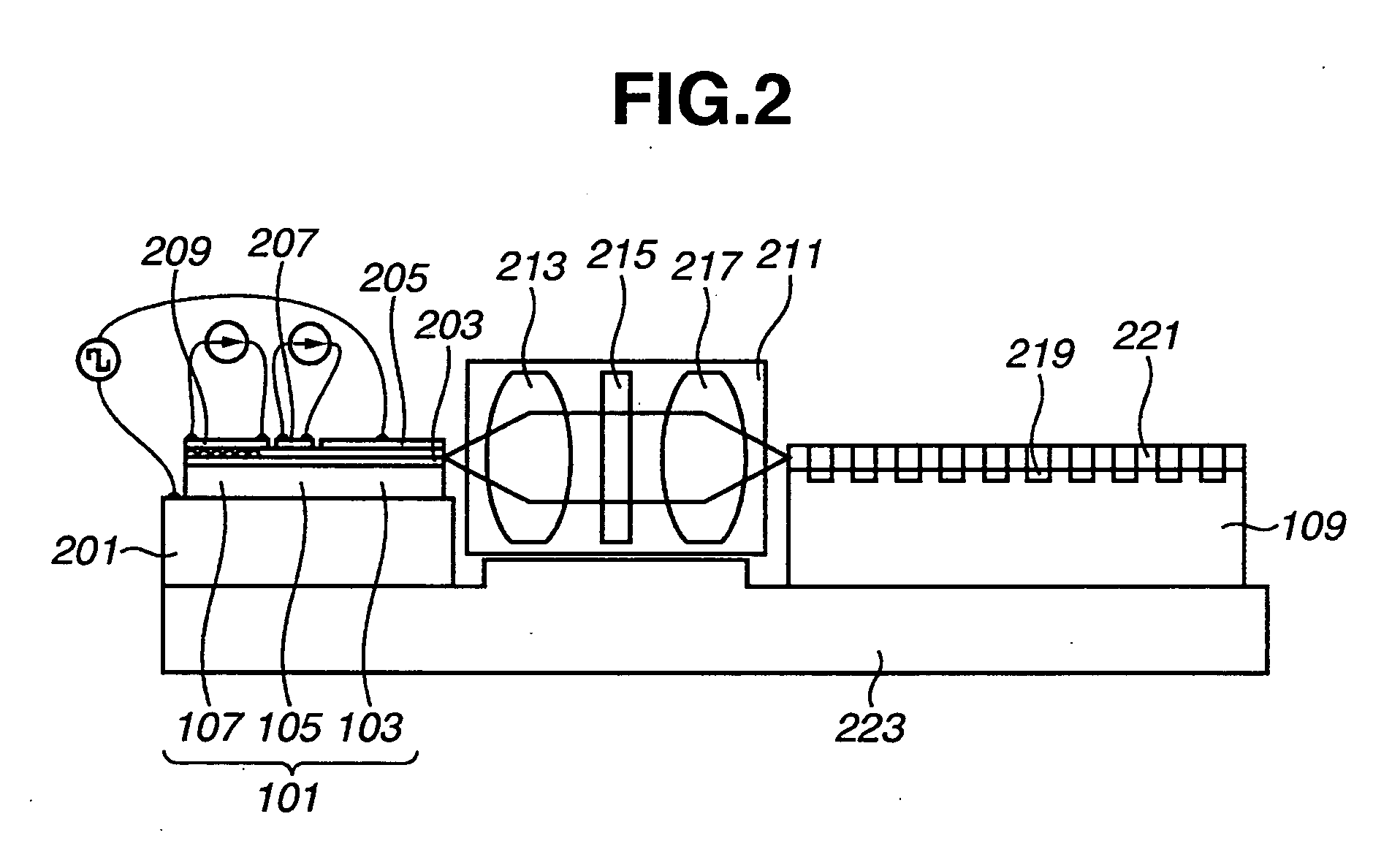Light wavelength converting apparatus, control method of the same, and image projecting apparatus using the same
a technology of light wavelength converting apparatus and control method, which is applied in the direction of instruments, semiconductor lasers, optical elements, etc., can solve the problems of large conversion efficiency of wavelength range, difficult to estimate control parameters with high precision, and power consumption is likely to increase in the apparatus of fig, so as to reduce consumption power
- Summary
- Abstract
- Description
- Claims
- Application Information
AI Technical Summary
Benefits of technology
Problems solved by technology
Method used
Image
Examples
first embodiment
[0028]FIG. 1 illustrates the structure of a light wavelength converting apparatus according to the present invention. As illustrated in FIG. 1, a DBR semiconductor laser 101 includes a gain region 103, a phase region 105, and a DBR region 107 provided with a diffraction grating. The DBR semiconductor laser 101 emits fundamental-wave light. Temperatures of the phase region 105 and the DBR region 107 are controlled by injecting current perpendicularly to a pn junction provided therein, or injecting current into a thin-film heater provided therein. The refractive index of a waveguide is changed by such a change in the temperature. Phase and reflectivity for the fundamental-wave light in the DBR semiconductor laser 101 are accordingly adjusted to vary oscillation wavelength.
[0029] Fundamental-wave light emitted from a rear side of the semiconductor laser 101 is input into a fundamental-wave light detector 113. The fundamental-wave light detector 113 converts power of the fundamental-wav...
third embodiment
[0060] A description will now be given for a light wavelength converting apparatus with reference to FIG. 5. FIG. 5 illustrates the structure of a light wavelength converting apparatus of the third embodiment. In FIG. 5, the same portions or elements as those in FIG. 1 are designated by the same reference numerals.
[0061] The third embodiment is different from the first embodiment in that a temperature sensor 403 for supplying temperature information to the control portion 119 is provided on a sub-mount 401 on which the DBR semiconductor laser 101 is mounted, and in that the wavelength controller 123 stores a correcting coefficient for the temperature information from the temperature sensor 403. As for the other points, the third embodiment is the same as the first embodiment.
[0062] In the first embodiment, the wavelength continuous varying curve is represented by
a·IDBR2+b·Iphase2=(c(i)+c(i+1)) / 2
In this formula, the proportional coefficients a and b were determined to remain almo...
second embodiment
[0072] The determination of the wavelength continuous varying curve is not limited to the above-discussed description. It can also be carried out by fitting to an appropriate function from discretely-detected changing points, or by connecting changing points with straight lines to create a zigzag locus of changing points. It is naturally allowable to obtain the wavelength continuous varying curve considering the hysteresis as in the second embodiment, instead of acquiring the central line between the two adjacent loci of changing points.
PUM
| Property | Measurement | Unit |
|---|---|---|
| wavelength | aaaaa | aaaaa |
| wavelength | aaaaa | aaaaa |
| length | aaaaa | aaaaa |
Abstract
Description
Claims
Application Information
 Login to View More
Login to View More - R&D
- Intellectual Property
- Life Sciences
- Materials
- Tech Scout
- Unparalleled Data Quality
- Higher Quality Content
- 60% Fewer Hallucinations
Browse by: Latest US Patents, China's latest patents, Technical Efficacy Thesaurus, Application Domain, Technology Topic, Popular Technical Reports.
© 2025 PatSnap. All rights reserved.Legal|Privacy policy|Modern Slavery Act Transparency Statement|Sitemap|About US| Contact US: help@patsnap.com



